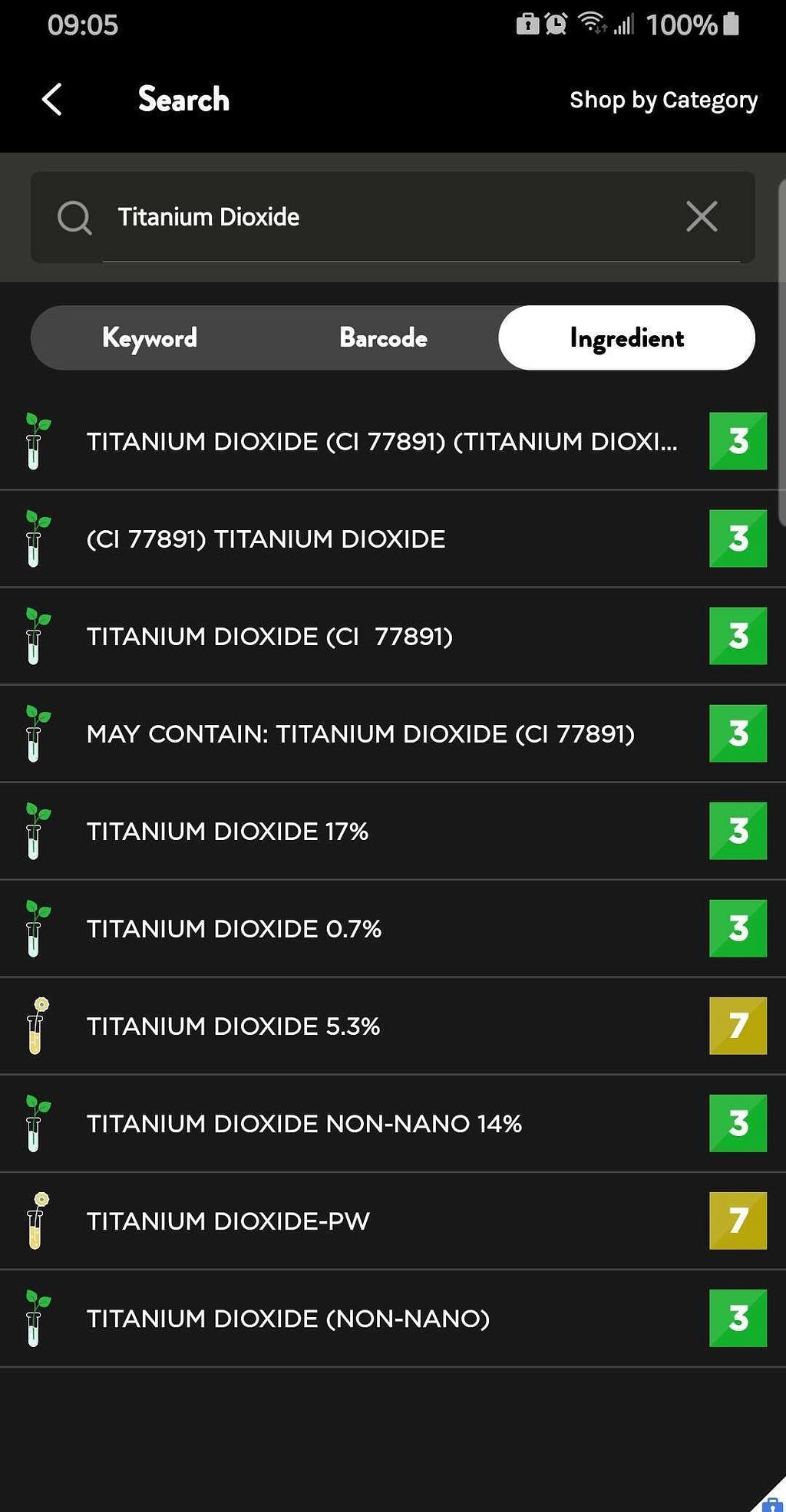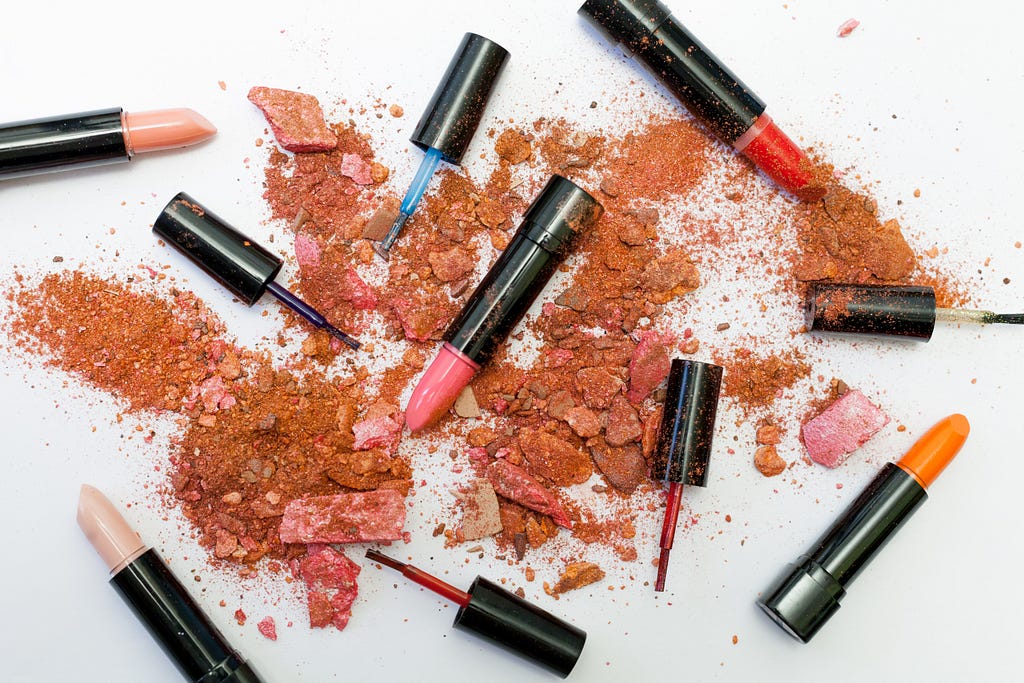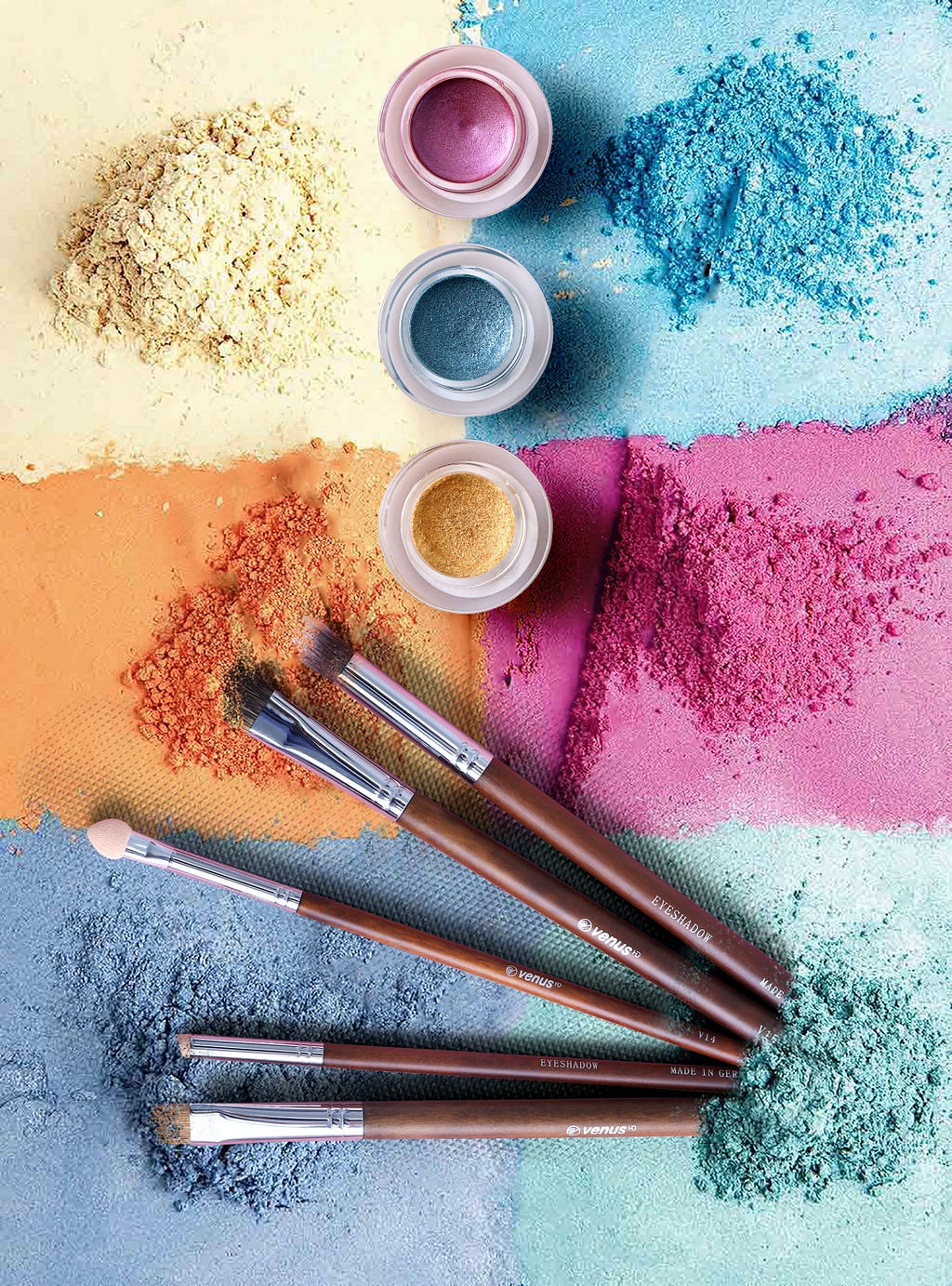
When looking to buy makeup, we often take for granted how varied the colors of the products are. But have you ever wondered about where that color comes from? What about the safety of those colors — how do we know that the pigments used are non-toxic? Is there a difference between synthetic and natural pigments? Today we break down everything you need to know about what makes all the colors of the rainbow and how those ingredients are regulated.
What is a Pigment?
You can find pigments, or color, in not only makeup but all sorts of personal care products. From blushes and foundations to shampoos and soaps pigments are added for a variety of reasons.
The use of pigments for cosmetics dates way back to prehistoric times. The Ancient Egyptians were known to mix copper minerals with lead to add definition and color to their faces, along with using kohl to define their eyes into an almond shape. The Chinese and Japanese also have a history of using gum or beeswax to dye their fingernails and use rice powder to whiten their skin. Another common tradition passed down through the ages is the use of henna made from the henna plant in India that is used to add designs to the hands and feet of women for special occasions.
Nowadays, pigments are classified into three forms: organic, inorganic, and dyes. Organic pigments aka true pigments (ie. lakes and toners) are based on a chemical structure called Benzene. Inorganic pigments (ie. metal oxides such as Titanium Dioxide/Iron Oxides and mineral salts) come from natural mineral compounds. Dyes are a class of pigments that do not fit within either category but are mainly sorted by their ability to dissolve in water or oil. These can be either natural or man-made. The word pigment is often interchangeable with color additives in the cosmetic industry.
Common Colors
Before we get into some technical stuff, let’s talk about some common pigments that you will come across when shopping for makeup.

Titanium dioxide (CI 77891) is a very generic white that is often added for both color and opacity in products. It is a naturally occurring mineral that is sourced mainly from Ilmenite. A key characteristic of Titanium Dioxide that makes it also very popular is its UV protection. It is often combined with Zinc Oxide to form broad-spectrum protection in sunscreen.
All forms of Titanium Dioxide, both nano and non-nano, are considered safe. The general consensus regarding Nanoparticle Titanium is that it does not penetrate beyond the outer layers of the skin. However, there is some evidence that Titanium Dioxide can have deeper penetration on damaged and broken skin. Despite the likely safety of Titanium Dioxide, most governing bodies have imposed limits on concentrations for powder and aerosol forms due to concerns surrounding inhalation.
Iron oxides (CI 77489, CI 77491, CI 77492, CI 77499) are inorganic pigments that come from iron being exposed to oxygen. There are 16 known kinds, with the most known being rust. They come in all sorts of colors — orange, red, yellow, brown, and black. In nature, when iron oxides form, they tend to create heavy metal byproducts. Nowadays, iron oxides are man-made to avoid those contaminants and impurities. There is no evidence of toxic or carcinogenic effects, nor do they cause issues for sensitive skin. Iron oxides are generally grouped together, as they are the basis for making skin shades.
Ultramarine (CI 77007) is a bright blue inorganic pigment that was originally made from grinding lapis lazuli stone. It was a highly coveted pigment by painters in the past due to its limited availability. Nowadays, ultramarines are made into various shades of blue, violet, and pinks. Like the iron oxides, they have minimal safety concerns (and to note minimal research) on their usage. The FDA considers it safe for use in foods and cosmetics, with no limitations.
D&C Red 6 & 7 (CI 15850) are organic pigments part of the azo dye group. The FDA lists these dyes for drugs and cosmetics. They cannot be added to products around the eyes, but there is no concentration limit for either Red 6 or Red 7.

With this knowledge, you know the basics of color additives but keep reading for a little more of the nitty-gritty regarding regulations.
Systems You Should Know
When a pigment is discovered, it is often given a CI or Color Index number. This system is a universal way of determining which pigment is being discussed. The Society of Dyers and Colorists and the American Association of Textile Chemists and Colorists maintain the database. It was first published in 1925 in the US. This index refers to not only dyes and pigments used in food and cosmetics, but also for artists and decorators.
The FDA also has a list of pigments that are safe for use in either Food, Drugs & Cosmetics (ie. FD&C) or only safe for use in Drugs & Cosmetics (ie. D&C). It is important to know the difference between these two. They separate which pigments can be in products that may get consumed or ingested, such as the eyes or lips. There is also another classification within D&C, which is Ext. D&C — this means that these pigments can not be in products used close to any mucous membranes.
Countries Regulations
Each country has its own regulations regarding which pigments can be added to what products and where. Here is a quick summary of the three major regions that you would often come across.

In the USA, the main regulator is the FDA. They list color additives into two general categories: those that need the FDA’s certification process and those that do not. Synthetic organic dyes, lakes, or pigments, need batch certifications. This means each batch made has to fit the standards set by the FDA for approval. Plant or mineral sourced dyes and pigments often do not need batch certification.
Note: You may have heard of “coal-tar colors” or “coal-tar dyes” before. These are colors that were discovered from leftover coal/tar production. Nowadays, these colors come from raw materials obtained from petroleum.
Canada’s main body of regulations for cosmetics is Health Canada. They have similar guidelines to the FDA, but they have their own restrictions for some pigments. These color additives are on the hotlist/restricted list. The hotlist limits how much of the pigment can be added into a product and what area(s) of use are allowed.
The European Union is rather unique compared to Canada and the USA. The governing body for color additives is the ECHA (European Chemical Agency). It not only regulates color additives for cosmetics, but for any other usage such as paint, coatings, and printer inks. As of today, their listing contains 308 allowed colorants for cosmetics. These are regulated by product type, allowed area of body parts, and any extra restrictions if necessary.
To Summarize
So what should you take away from this article? Here are some key points to keep in mind the next time you go shopping for makeup:
- Titanium dioxide can have UV protection when paired with zinc oxide
- Inorganic pigments such as iron oxides and ultramarines are safe to use anywhere
- Any D&C pigments are limited to only drugs and cosmetic use
- Some pigments are not allowed to be used around the eyes or on the lips
Thanks for taking the time to learn more about color additives and be sure to check your products in the Think Dirty App to learn more!

Disclosure: We are a professional review and product rating website and mobile app that receives compensation from the companies whose products we review and rate. We are independently owned and the opinions expressed here are our own interpretations of a trusted source.
The Great Color Debate was originally published in Think Dirty on Medium, where people are continuing the conversation by highlighting and responding to this story.